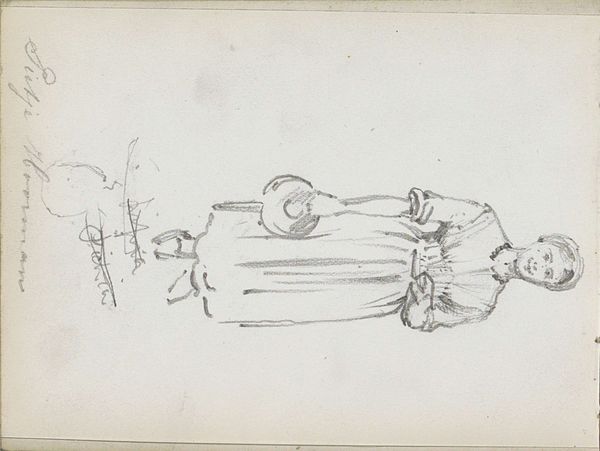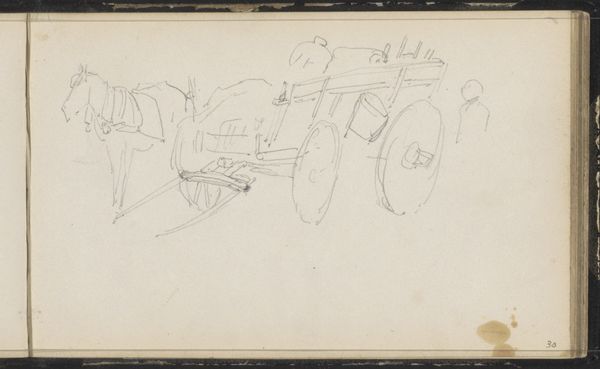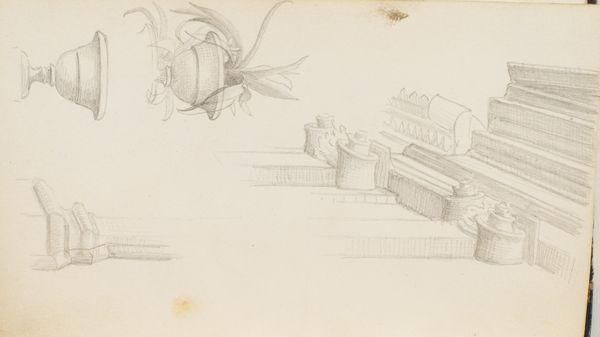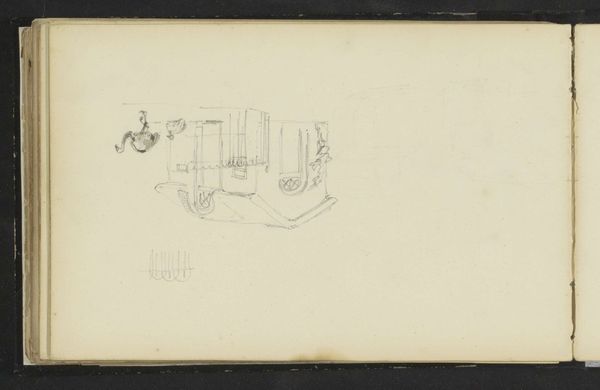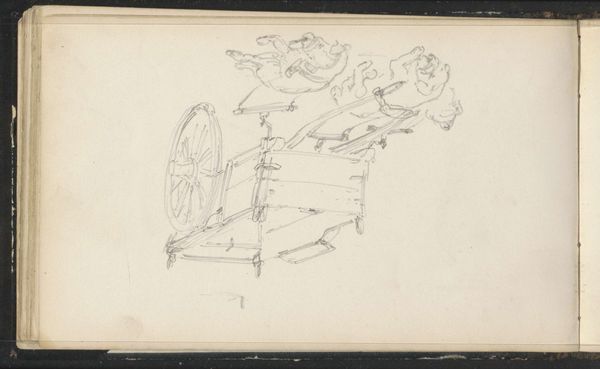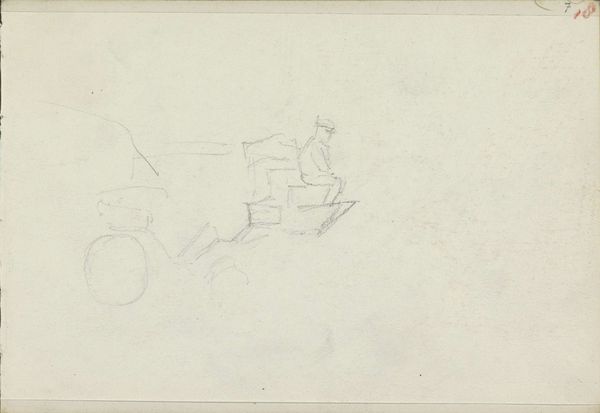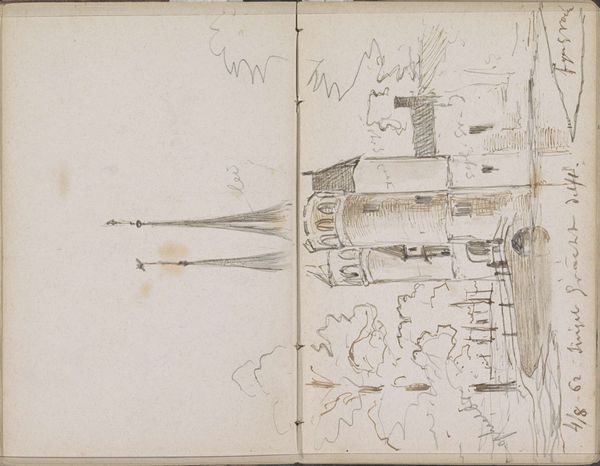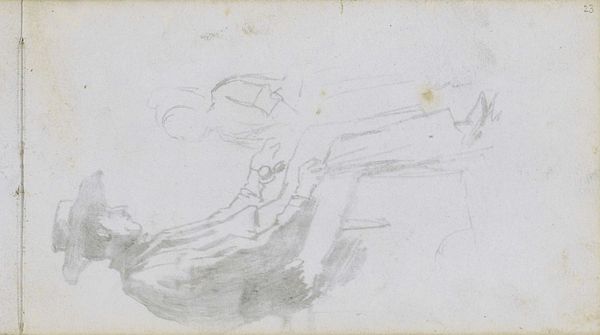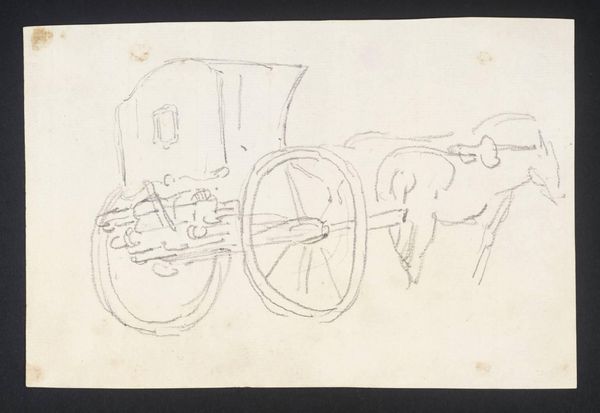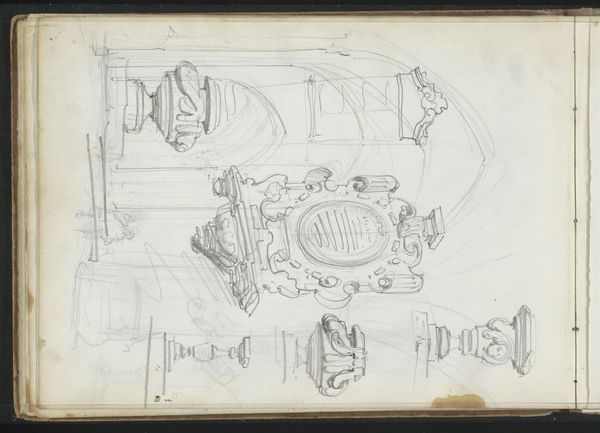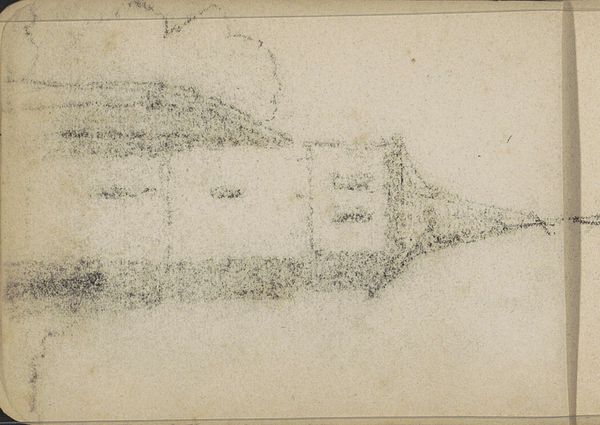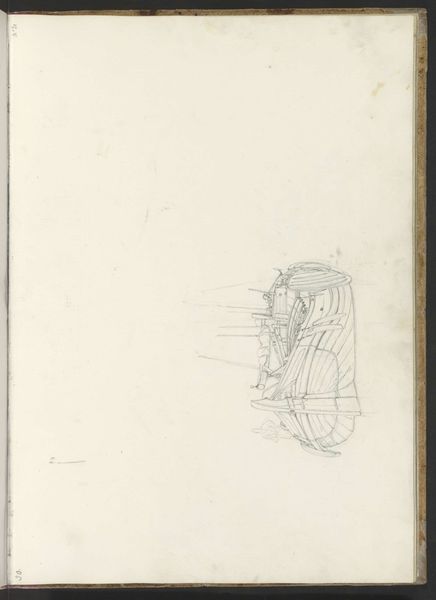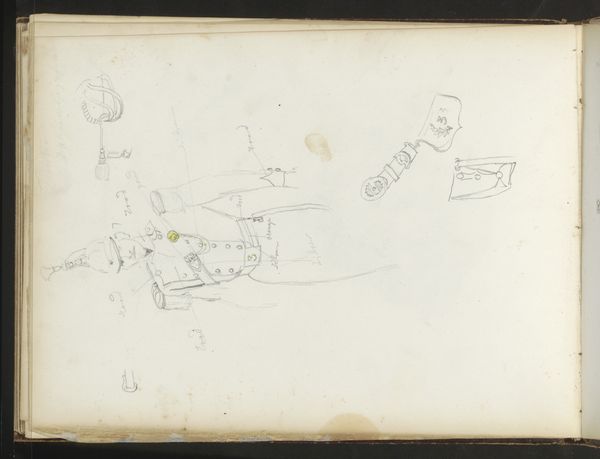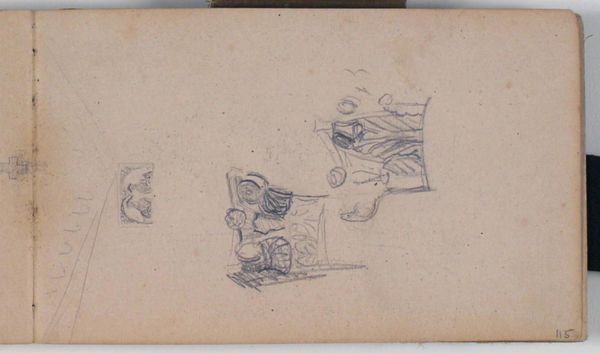
Studie af nedre del af en af vinduesrammerne på Molkes palæ, Dronningens Tværgade/Bredgade 1881
0:00
0:00
drawing, pencil
#
drawing
#
landscape
#
coloured pencil
#
pencil
Dimensions: 113 mm (height) x 182 mm (width) (bladmaal)
Curator: At first glance, this appears almost like a page from a notebook, the lines sketched quickly, almost haphazardly. Editor: Indeed. The apparent spontaneity conveys a delightful sense of intimacy and immediacy. It’s titled "Studie af nedre del af en af vinduesrammerne på Molkes palæ, Dronningens Tværgade/Bredgade" or, Study of the Lower Part of one of the Window Frames at Molke's Palace at Queen's Cross Street/Broad Street made by Niels Larsen Stevns in 1881. The composition is intriguing: the stark contrast between the sketch of what seems to be the face of a man in profile compared with the detailed decorative relief beneath the window gives the work its strong artistic energy. Curator: Moltke's Palace, you say? That was a hotbed of political power. The Palace was an epicenter of the cultural and social elites during the time it was produced. I am very curious as to what this quick rendering meant for Stevns and how it circulated to become part of SMK’s holdings. It certainly provides access into the lives of a certain societal class at this point in time, doesn't it? Editor: The details in that lower window frame truly ground the drawing; they bring in an element of naturalism. Yet I am struck by the sketch above; I am struck at how different it is in tonality and intent from that section beneath it. What does that juxtaposition say to the viewer? Curator: One can certainly see how the palace might symbolize Danish national identity and power dynamics. Artists were keenly aware of these symbols. It also prompts a conversation about art and its relationship to socio-political life in Copenhagen in the late 19th century. Editor: The drawing here functions as more than just a simple study; it offers a view into the formal elements, particularly Stevns' command of contrast and the overall expressive power of simple pencil work. I also feel it reveals the personality behind these palaces that might normally feel cold or untouchable. Curator: The artist is indeed engaging with visual politics of the day. Food for thought when we consider which imagery is created and displayed in public museums today. Editor: I walk away looking to find instances of artistic intervention or moments that disrupt, with the effect that both startles and informs.
Comments
No comments
Be the first to comment and join the conversation on the ultimate creative platform.
